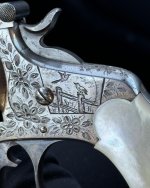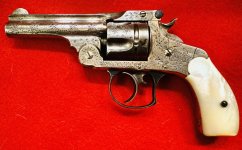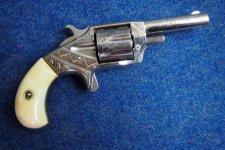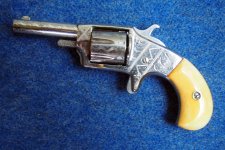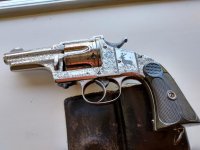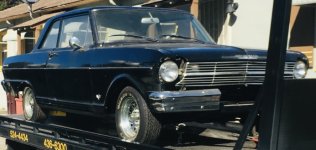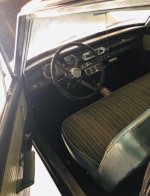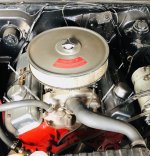Period engraving
No factory records remain for these but looking through early Major Distributor catalogs and early advertisements proves that this type of engraving is actually seen as early as 1877 in my Western Gun Works catalog.
That would be “pre-electricity”. It’s possible the punch-dot and scribble was applied by early steam driven machines but literally all of them have hand chiseled engraving on the surface as clearly noted by deep leafing and vine styles.
What is also pretty solid is the lovely circular murals of animals, ships, heads, etc normally on the left side frame.
I have an XL 5 with a lions head mural with the exact same mural on an earlier XL 6 and they do not match. So the mural is not a stamp it is hand engraved. It is possible though that they had multiple stamps or a stamp wore out and they replaced it with another. More study would be needed. There are duplicate murals so it is possible that the mural was also stamped onto the metal.
I would guess that the scribble with dots are also stamped on with tooling since sometimes you can see an offset pattern that supports a continuous stamping by hand and then an overlay of the stamp to continue the pattern.
Even the small leafs and patterns on the OPs lovely example are likely stamps along with hand engraving. So in my opinion is a mix of hand engraving and actually stamping the metal with die stamps. Like Patbars late example. The scribble pattern you can see the overlay of the stamp to continue the pattern. So the engraver saved time using stamps and then hand engraved whatever additional designs he/she wanted applied.
The only thing I dislike about this type of engraving is often it is very soft or applied very lightly and much of it has been worn off. It bothers me to no end when I find one like that. It’s like lost art.
Murph

